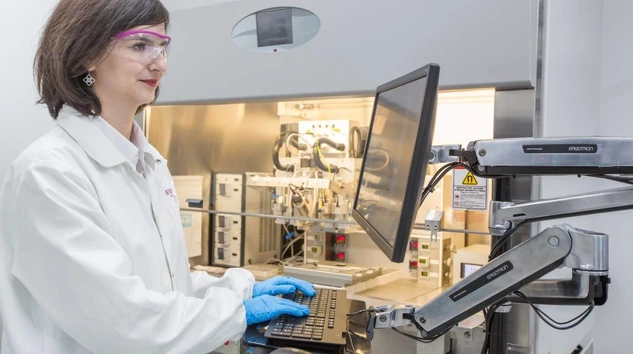A second skin from the laboratory: Evonik explores the future of tissue engineering
Pain, fluids, odor—and endless dressing changes: Chronic wounds often fail to close, and patients’ bodies appear unable to heal. The current therapies for such wounds are arduous and often do not bring lasting success. Evonik is developing new materials and procedures to simplify and accelerate the growth of skin tissue in the laboratory and to increase reproducibility.

Tissue engineering refers to the development of substitute materials that can restore, maintain or improve the function of biological tissue with the help of cultured cells. The development of innovative therapeutic approaches for the treatment of chronic and burn wounds is only one of the goals of Evonik’s Tissue Engineering Project House. Cells in the laboratory need a scaffold and a specific nutrient mix to organize and reproduce in the same way as in the human body. Overall, there are over 300 ingredients which must be combined in an optimal fashion.
“We are researching all components because we want to offer our customers the best material for tissue engineering,” says König. His team can rely on extensive expertise in the area of medical applications. Amino acids and derivatives, peptides and biodegradable polymers are already part of Evonik’s portfolio. König is certain that this will generate strong impulses in the market for regenerative medical products.
Evonik is researching all components as its ultimate goal is to offer customers the best material. Cultured cells or skin tissue from the laboratory can be used for novel therapies in wound healing. This would involve culturing and expanding a patient’s cells in vitro—in the laboratory. The same cells are then reimplanted into the wound to initiate or accelerate the healing process. Further developments in skin grafts are another option. Thus, it may become feasible to grow the patient’s own skin in the laboratory and then apply it to the wound.
Nevertheless, he demand for laboratory-engineered skin goes far beyond the area of clinical applications. There is also a need for optimized approaches for so-called skin models, realistic replicas of the human skin that are employed for research and testing purposes in laboratories, for example to test new cosmetic ingredients, cleaning agents or chemicals.
Evonik scientists are not only researching innovative procedures, but are also working to optimize the involved materials. Evonik vision is to create efficient solutions based on the existing competencies, further research activities, and external expertise to enable the customers to develop optimized products. Based on the project house developments, Evonik aims to offer new scaffold materials and nutrient solutions for tissue engineering in commercial applications in the future
